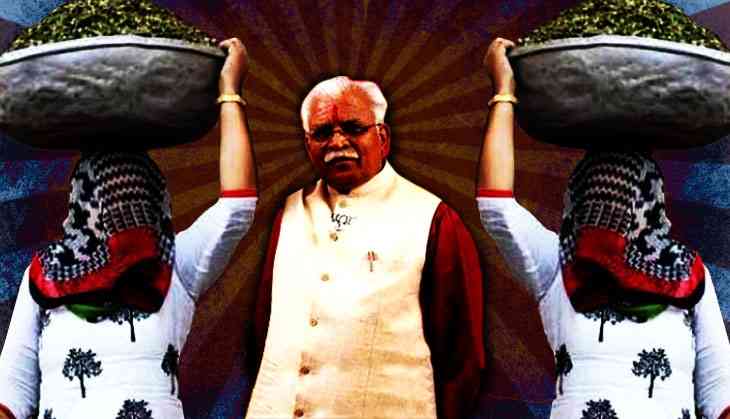Varnika Kundu case: Modi's Beti Bachao has clearly not reached Khattar's Haryana

When Prime Minister Narendra Modi launched his Beti Bachao, Beti Padhao campaign in January 2015, he did so from Panipat, Haryana. The location was no co-incidence – Haryana not only has one of the worst sex ratios in the country, but is also home to some of the country's most backward gender values.
Accompanying Modi onstage that day was Haryana CM Manohar Lal Khattar. Khattar, who smiled and nodded vigorously as Modi launched the program, would go on to launch the state's own Beti Bachao, Beti Padhao initiative in July that same year. Speaking at the launch of the state's initiative, Khattar presented himself as a crusader for gender equality, speaking grandly of his vision for gender equality and women's rights in the state.
However, since then, Khattar has repeatedly undermined this initiative, proving himself to be the embodiment of Haryana's regressive gender attitudes.
Politics over values
On Saturday, 5 August, Varnika Kundu’s ordeal reminded us of just how unsafe Haryana is for women. Kundu, a Chandigarh-based DJ, was driving home late at night when two men in an SUV, later identified as Vikas Barala, son of Haryana BJP chief Shubash Barala, and his friend Ashish Kumar, stalked and attempted to abduct her.
Kundu escaped harm by calling the police, who arrested both men. This incident would have been the perfect time for Khattar to demonstrate his commitment to a safer environment for women and the cause he had so publicly pledged himself to. Instead, Khattar twice chose to defend his party colleague rather than effectively condemn the incident.
Worse still, Khattar has allowed political pressure to influence the course of justice. Certain charges against the accused were dropped by police, so as to allow them to secure bail. Multiple CCTV cameras along the route the incident occurred on also 'mysteriously' stopped working. All of this though, is immaterial to the man who launched Haryana's Beti Bachao, Beti Padhao scheme.
Khattar’s inaction, galling in itself, is worse in the context of Haryana, a state which recorded 49,509 complaints of crimes against women between 1 September, 2015 and 31 July, 2016. Out of these complaints, 31,570 had to do with either stalking, kidnapping, rape, attempt to rape, or sexual harassment.
In a state where crimes against women are this rampant, Khattar's refusal to take a tough stand on the matter is congruent with the misogynist and patriarchial attitudes that this dispensation presents as status quo. It is also congruent with Khattar's own statements that have shown just how little he cares for gender equality or the upliftment of women.
Sexism is second nature
In 2014, even before his party swept the state elections in Haryana, Khattar blamed women for rising instances of rape, insisting that girls “lure” their attackers. Speaking on the election trail, Khattar stated, “If a girl is dressed decently, a boy will not look at her in the wrong way.” When he was questioned further about this, he continued, “If you want freedom, why don't they [girls] just roam around naked?”
These backward attitudes have followed Khattar into power, as we saw earlier this year when the government's Krishi Samwad magazine put them on public display. The magazine carried a full page photo of ghunghat-clad woman carrying cow feed, with a caption celebrating the veil as “the identity of Haryana”. While the image drew flak, the Khattar government defended itself, boasting a track record of women's empowerment. A closer inspection of this claim, though, exposes its hollowness.
False claims of empowerment
Under Khattar's rule, the Haryana Commission for Women (HCW) has been all but defunct. Khattar dissolved the commission by ordering the removal of the chairperson (Kamlesh Panchal) and vice-chairperson (Suman Dahiya) in August 2015. Panchal and Dahiya contested this order in court, leading to a situation where the HCW was rendered non-existent.
In May 2016, the High Court overturned the Khattar government's order, with the Supreme Court upholding the High Court’s verdict in September 2016. Despite this, both Panchal and Dahiya claimed that the government was uncooperative, refusing to provide even basic facilities and leaving the HCW desperately understaffed.
When their tenures finally ended in May 2017, the Khattar government didn't even have a replacement ready. This left the HCW without a single member for a further two months. This apathy perfectly reflects the Khattar government's attitude towards women's empowerment.
The Khattar government's sham concern for achieving gender equality though, is best displayed through the states sex ratio. Haryana's sex ratio, which was a depressing 834 females to 1000 males in 2011, saw a stellar improvement under Khattar. It raced to 900 females by end 2016, and continued its meteoric rise by reaching 950 females by March 2017.
Was the key to this improvement the Khattar government? Yes! Just not the way you'd hope. A Beti Bachao, Beti Padhao audit showed that Haryana had grossly inflated the actual numbers. Panipat, the city from which PM Modi had launched the Beti Bachao, Beti Padhao campaign, had overstated the number of females by 135. Clearly the Khattar government is more concerned with the appearance of helping women, rather than actually helping women.
With this sort of leader, and this sort of government, are we really surprised women in Haryana are unsafe?


